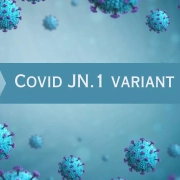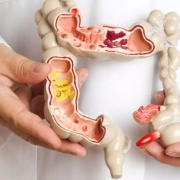Dr YSR University of Health Sciences to hold 26th Annual Convocation In February 2024, details

Andhra Pradesh: Dr YSR University of Health Sciences has announced the conduction of the 26th Annual Convocation in the month of February 2024.
All the students declared successful in the respective examinations of the year 2021 are eligible to receive the Degree certificates “IN PERSON” or “INABSENTIA”. The last date for submission of filled in application forms is 05.01.2024. The students need to visit the official website of the university for the application form.
Filled-in application forms should be sent to the “CONTROLLER OF EXAMINATIONS” Dr. YSR University of Health Sciences, Vijayawada only on or before 05.01.2024. The envelope containing the filled-in application should be superscribed “26th Annual Convocation”.
Instructions to apply for degree certificates –
All the students declared successful in their respective regular examinations of the year 2021 pertaining to Super Specialty Degree, Post Graduate Degree, Post Graduate Diploma, and PhD courses are eligible to receive the Degree certificates “IN PERSON” or “IN ABSENTIA”.
All the Undergraduate students declared successful in their respective regular examinations of the year 2021, including internship, are eligible to apply for the award of Degrees “IN ABSENTIA” of the convocation only. Degrees will not be awarded “IN PERSON” for undergraduates.
Such students for whom compulsory internship is not applicable but have passed their respective regular examination of the year 2021 are eligible to receive the Degree Certificates “IN ABSENTIA” only.
The filled-in Application Form should be submitted in person or by post to the Controller of Examinations, Dr.YSR University of Health Sciences, A.P. Vijayawada, so as to reach on or before 05.01.2024 duly enclosing all the required documents and Demand Draft as directed in the instructions/guidelines given in the concerned application form.
Applications received after 05.01.2024 will not be considered.
The exact date, time, and venue of the Convocation will be notified separately.
The candidates applying for Degrees “IN PERSON”, for the PhD, Super Specialty Courses, and Medal / Prize winners only will be called onto the dais to receive the Degrees / Medals / Prizes. All other candidates (post-graduates) have to receive the Degrees in their respective seats only and will not be called onto the dais during the Convocation. IN ABSENTIA Degrees will be sent to the candidate’s address by post.
Instructions/guidelines to the applicants –
Use capital letters only while filling out the application form. Applications must be routed through the Principal of the College where the candidate has studied the Super Specialty/ PG Degree/ PG Diploma/ PhD/ Under Graduate Degree Courses.
Full Name –
1. It should be written as spelled in the Intermediate or its Equivalent Certificate by those who are applying for UG Degree Certificates.
2. It should be written as spelled in the UG Degree Certificates by those who are applying for Super Specialty/PG Degree/PG Diploma/Ph.D. Certificates.
3. In case of those who want to obtain Super Specialty/PG Degree/ PG Diploma/PhD/UG Degree Certificates as per the changed Name / changed Surname, the Full Name must be written as spelled in the AP Gazette, Proceedings of the Dr. YSR University of Health Sciences or any other Competent Educational Authority.
Passport Size Photographs –
1. One photograph should be affixed on the Application Form duly attested by the Principal of the college where the applicant has studied and passed.
2. Two photographs should be kept in an envelope and are to be enclosed in the Application.
The fee to be paid online as detailed below –
The online Payment link is mentioned in the notice below for degree certificates as detailed below –
|
Course |
Fee for obtaining |
|
|
In-Person |
In-Absentia |
|
|
Super Specialty/ |
2000/- |
3000/- |
|
MSc Applied |
2000/- |
25000/- |
|
MSc Nursing, MPT |
1500/- |
2000/- |
|
MSc (M) |
1000/- |
1500/- |
|
All UG Courses |
– |
1000/- |
It should
be filled up by those who are applying for UG Degree Certificates only.
The
following documents are to be enclosed –
Common to
all applicants –
Those
candidates who want to obtain their Degree Certificates as per the changed Name
/ changed Surname should submit an attested copy of the AP Gazette / Proceedings of
Dr. YSR University of Health Sciences or any other Educational Authority.
All
enclosures must securely be tagged to the application.
The envelope containing two (2) passport-size photographs should be kept with the application, along with enclosures
Online
payment receipt should be enclosed in the application
There is no
need to enclose a self-addressed envelope either with stamps or without stamps.
By those
who are applying for issue of Super Specialty /PG Degree / PG Diploma /PhD
Degree Certificates only respective course and UG Degree Certificate –
|
For Super Specialty |
Attested copy of PG |
|
For PG |
Attested copies of the Provisional Certificate of the respective course and UG Degree Certificate |
|
For PhD |
Attested copy of the |
By those who are applying for issue of UG Degree Certificates only –
1. Attested copy of Intermediate or Equivalent Certificate.
2. Attested copy of the Internship Certificate issued by the Principal of the concerned College.
3. Attested copy of UG Degree Provisional Certificate
4. Attested copy of Temporary / Permanent Registration Certificate as proof of having registered themselves with MCI/NMC/DCI/INC etc.
5. Attested copy of individual marks memos of First to Final year UG Degree Exams (only if the Official Transcript is not yet been issued by Dr. YSR UHS)
6. Attested copy of G.O. on transfer of candidate from one college to another college during the Internship period.
7. Address and Mobile numbers of the candidates shall be written in the following space (two copies)
To view the notice, click on the link below –
https://medicaldialogues.in/pdf_upload/convocation-notification-2-229144.pdf
Powered by WPeMatico






















